News - Put Out Into the Deep RSS Feed
-
- All News
-
-
-
- Additional Materials (2)
- American Indian Catholic Outreach (3)
- Archbishop's Column (213)
- Articles (2384)
- Briefs (19)
- Campus Ministry (12)
- Español (239)
- Home (164)
- Homilies (1)
- Honor Dance (1)
- Jobs Box (16)
- Local (4)
- News (12)
- News & Events (3)
- Oklahoma Catholic Native Schools Project (7)
- Put Out Into the Deep (215)
- Put Out Into the Deep - Español (192)
- Sooner Catholic (51)
- St. Kateri Tekakwitha Spiritual Center of Oklahoma (3)
- Synod Session Schedule (1)
-
-
 November 20, 2025In October, I had the joy of leading our Catholic Foundation of Oklahoma pilgrimage to France and accompanying our 22 pilgrims. Pilgrimages are the occasion for a renewal of faith and a strengthening of hope. Hope is very much at the heart of this Jubilee year with is themed “Pilgrims of Hope.”Read More
November 20, 2025In October, I had the joy of leading our Catholic Foundation of Oklahoma pilgrimage to France and accompanying our 22 pilgrims. Pilgrimages are the occasion for a renewal of faith and a strengthening of hope. Hope is very much at the heart of this Jubilee year with is themed “Pilgrims of Hope.”Read More -
 November 5, 2025On Sunday, you may have noticed that the priest at your parish was not wearing green, the liturgical color prescribed for Ordinary Time. He was wearing white for the Feast of the Dedication of the Basilica of Saint John Lateran.Read More
November 5, 2025On Sunday, you may have noticed that the priest at your parish was not wearing green, the liturgical color prescribed for Ordinary Time. He was wearing white for the Feast of the Dedication of the Basilica of Saint John Lateran.Read More -
 October 23, 2025The liturgical calendar is the Church’s schedule of feasts and seasons that mark the rhythm of our life of faith. The cornerstone of the liturgical year is Sunday, the Lord’s Day, which is always a “little Easter.” We also have seasons such as Ordinary Time and days such as Ash Wednesday, which begins the penitential season of Lent. We have Advent and the Christmas season, and the feasts of the various saints we venerate.Read More
October 23, 2025The liturgical calendar is the Church’s schedule of feasts and seasons that mark the rhythm of our life of faith. The cornerstone of the liturgical year is Sunday, the Lord’s Day, which is always a “little Easter.” We also have seasons such as Ordinary Time and days such as Ash Wednesday, which begins the penitential season of Lent. We have Advent and the Christmas season, and the feasts of the various saints we venerate.Read More -
 October 9, 2025On Oct. 22, we will celebrate the feast of Saint John Paul II. Many who are reading this column will have personal memories of his life, ministry and heroic witness.Read More
October 9, 2025On Oct. 22, we will celebrate the feast of Saint John Paul II. Many who are reading this column will have personal memories of his life, ministry and heroic witness.Read More -
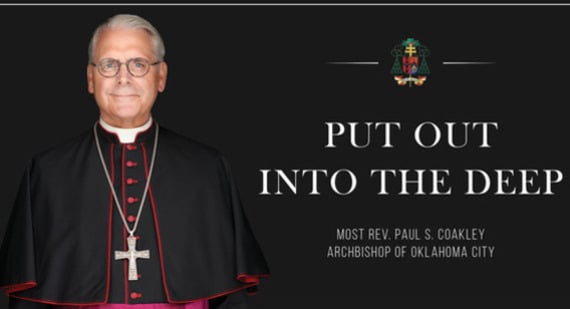 September 25, 2025It should not come as a surprise that priests need time away from their ministry to recharge from time to time. We see this even in the life of Jesus, who “went up on the mountain by himself to pray” (Mt 14:23) and who “spent the night in prayer to God” (Lk 6:12) after times of intense teaching and ministry.Read More
September 25, 2025It should not come as a surprise that priests need time away from their ministry to recharge from time to time. We see this even in the life of Jesus, who “went up on the mountain by himself to pray” (Mt 14:23) and who “spent the night in prayer to God” (Lk 6:12) after times of intense teaching and ministry.Read More -
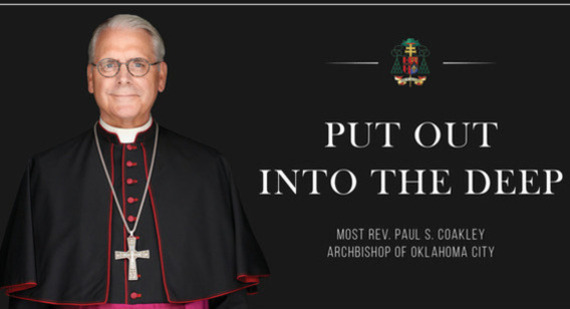 September 11, 2025In this Jubilee year, we are called to be “Pilgrims of Hope.” In the spirit of the great Jubilee tradition, we are invited to live this sacred time not merely as an anniversary to be observed, but as a season of grace – a time to restore what has been lost, to heal what is broken and to bear Christ’s light into a dark world that longs for his peace.Read More
September 11, 2025In this Jubilee year, we are called to be “Pilgrims of Hope.” In the spirit of the great Jubilee tradition, we are invited to live this sacred time not merely as an anniversary to be observed, but as a season of grace – a time to restore what has been lost, to heal what is broken and to bear Christ’s light into a dark world that longs for his peace.Read More -
 August 26, 2025The world knew her as Mother Teresa of Calcutta. As a young student priest in Rome, I had the unexpected privilege of meeting her when I celebrated Mass for her sisters at a soup kitchen they operated near the Colosseum.Read More
August 26, 2025The world knew her as Mother Teresa of Calcutta. As a young student priest in Rome, I had the unexpected privilege of meeting her when I celebrated Mass for her sisters at a soup kitchen they operated near the Colosseum.Read More -
 August 14, 2025As hard as it is to believe, another summer has come and gone. As I look ahead to the promise of a new school year and the cooler weather to come, I find myself reflecting on all that God has done over these past few months.Read More
August 14, 2025As hard as it is to believe, another summer has come and gone. As I look ahead to the promise of a new school year and the cooler weather to come, I find myself reflecting on all that God has done over these past few months.Read More -
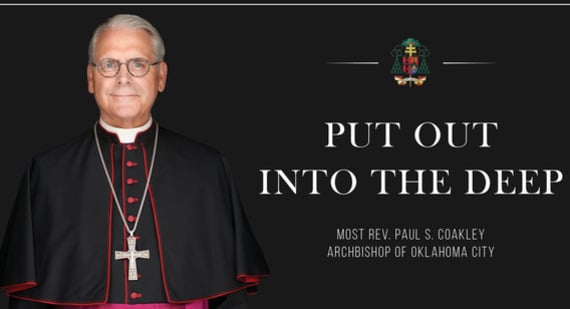 July 30, 2025On Aug. 7 we will celebrate the annual Archbishop’s Dinner for Seminarian Education at the National Cowboy & Western Heritage Museum.Read More
July 30, 2025On Aug. 7 we will celebrate the annual Archbishop’s Dinner for Seminarian Education at the National Cowboy & Western Heritage Museum.Read More -
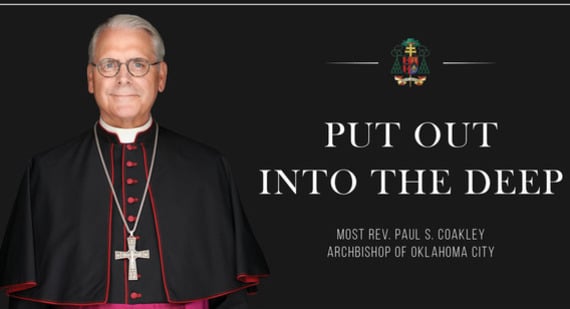 July 9, 2025Deep beneath the streets of Rome, a hidden network of pathways connects past and present, offering us a glimpse into the early Christian experience. The catacombs, those underground burial sites often used by the first believers as well as others, were more than just resting places for the dead, they became sanctuaries for the living.Read More
July 9, 2025Deep beneath the streets of Rome, a hidden network of pathways connects past and present, offering us a glimpse into the early Christian experience. The catacombs, those underground burial sites often used by the first believers as well as others, were more than just resting places for the dead, they became sanctuaries for the living.Read More -
 June 26, 2025Summer has arrived and students and staff in our archdiocesan Catholic schools are taking a much-needed and much-deserved break, given the success of the just-concluded school year.Read More
June 26, 2025Summer has arrived and students and staff in our archdiocesan Catholic schools are taking a much-needed and much-deserved break, given the success of the just-concluded school year.Read More -
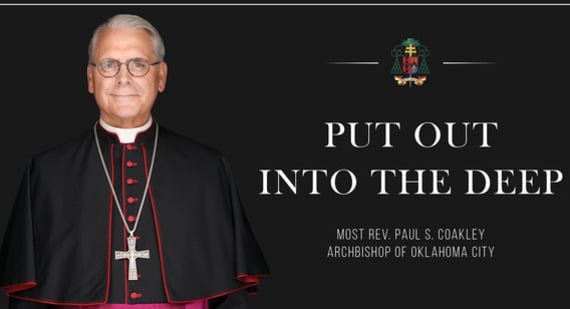 June 12, 2025Each time we celebrate the ordination of new priests we have an opportunity to reflect on the gift and mystery of the ordained priesthood in the life of the Church.Read More
June 12, 2025Each time we celebrate the ordination of new priests we have an opportunity to reflect on the gift and mystery of the ordained priesthood in the life of the Church.Read More -
 May 29, 2025During this time of year, the powerful story of Pentecost stirs deeply within my heart, as I visit parishes across our vast archdiocese to confer the Sacrament of Confirmation.Read More
May 29, 2025During this time of year, the powerful story of Pentecost stirs deeply within my heart, as I visit parishes across our vast archdiocese to confer the Sacrament of Confirmation.Read More -
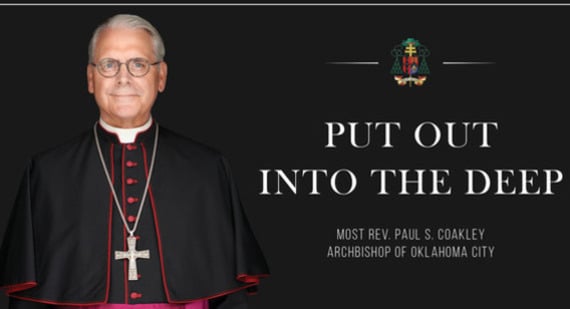 May 15, 2025During the recent conclave there was intense speculation (and even wagering) about who would step onto the balcony of Saint Peter’s Basilica after the white smoke cleared and solemn proclamation rang out, “Habemus Papam.”Read More
May 15, 2025During the recent conclave there was intense speculation (and even wagering) about who would step onto the balcony of Saint Peter’s Basilica after the white smoke cleared and solemn proclamation rang out, “Habemus Papam.”Read More -
 May 9, 2025Springtime and the Easter Season are times when we celebrate new life. How appropriate, then, that we pause during this time of year to celebrate Mother’s Day. Though not a religious holiday, it’s a fitting time and occasion to celebrate the life we have received.Read More
May 9, 2025Springtime and the Easter Season are times when we celebrate new life. How appropriate, then, that we pause during this time of year to celebrate Mother’s Day. Though not a religious holiday, it’s a fitting time and occasion to celebrate the life we have received.Read More -
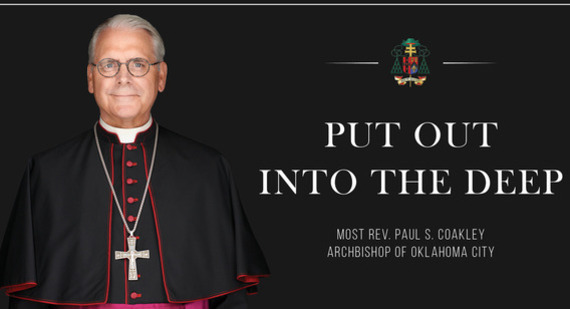 May 1, 2025Our dear Holy Father, Pope Francis, was called home to the Father’s house on Easter Monday, April 21, in the 12th year of his pontificate.Read More
May 1, 2025Our dear Holy Father, Pope Francis, was called home to the Father’s house on Easter Monday, April 21, in the 12th year of his pontificate.Read More -
 April 16, 2025Even for Christians, the mystery of the Resurrection of Jesus Christ is more powerful than we generally understand or acknowledge. It is not an event of the past but a reality that still shapes our lives today.Read More
April 16, 2025Even for Christians, the mystery of the Resurrection of Jesus Christ is more powerful than we generally understand or acknowledge. It is not an event of the past but a reality that still shapes our lives today.Read More -
 April 3, 2025Where has this Lent gone? We are already approaching Holy Week and the celebration of the most solemn days of the Church’s liturgical year!Read More
April 3, 2025Where has this Lent gone? We are already approaching Holy Week and the celebration of the most solemn days of the Church’s liturgical year!Read More -
 March 18, 2025By now, I suppose most of us have asked or have been asked, “What are you giving up for Lent?” It’s a popular topic in Catholic circles, within Catholic families, among friend groups and even among priests.Read More
March 18, 2025By now, I suppose most of us have asked or have been asked, “What are you giving up for Lent?” It’s a popular topic in Catholic circles, within Catholic families, among friend groups and even among priests.Read More -
 March 6, 2025On March 5, we entered another season of Lenten preparation for the Easter joy of the Lord’s resurrection. Each year, Ash Wednesday marks the beginning of Lent with a symbolic gesture of humble repentance by receiving ashes on our foreheads. It is a reminder of our own mortality.Read More
See More
March 6, 2025On March 5, we entered another season of Lenten preparation for the Easter joy of the Lord’s resurrection. Each year, Ash Wednesday marks the beginning of Lent with a symbolic gesture of humble repentance by receiving ashes on our foreheads. It is a reminder of our own mortality.Read More
See More
